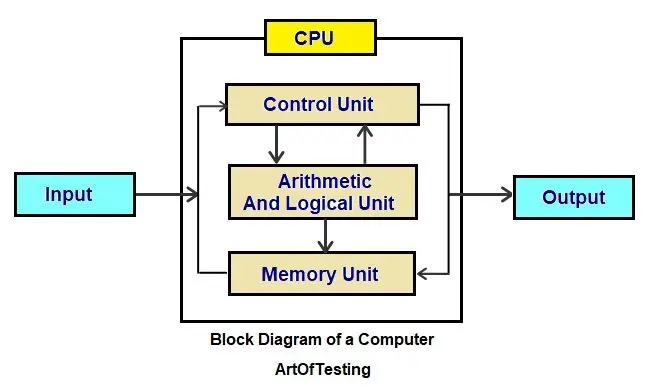Introduction
Starting from large room-sized machines to the compact and handy devices that we now know, the development of computers began long back and continues to go on even now. Computers or laptops are an integral part of our lives now. We probably cannot imagine a day without using these helpful machines. They have just made our lives easier. Hence it is important to know the history of the development of computers.
The development is categorized into generations of computers. We have talked about the first generation of computers that ranged from 1940 to 1956. We also discussed the second generation of computers which ranged from 1956 to 1963 and the third generation computers ranging from 1965 to 1971. The third generation bought about significant development and opened gates to new ideas. The development did not stop and with new advancements, we entered into the fourth generation of computers.
Let us talk about the fourth generation computers in detail.
Content
What is the Fourth Generation of Computers?
The fourth generation of computers existed between 1971 and 1980. These computers primarily used Very Large Scale Integrated (VLSI) circuits technology, also known as microprocessors. Small individual integrated circuits were replaced by the VLSI technology. These microprocessors made the central processing unit (CPU) of the computer.
Fourth-generation computers were more advanced and compact. These computers boosted the Personal Computer (PC) revolution. These computers also introduced user-friendly graphical user interfaces (GUI). This generation of computers featured real-time networks, time-sharing, and distributed operating systems. They were programmed using high-level languages like C, C++, DBASE, etc.
What are VLSI Circuits?
VLSI stands for Very Large Scale Integrated Circuits. They were first developed by Intel in 1971. They have about 5000 transistors and other elements with their associated circuits built on a single semiconductor chip. These could perform complex arithmetic and logical operations. These were also able to communicate with other devices.
Architecture of the Fourth Generation Computers
The fourth-generation computers essentially consisted of five separate units that functioned together. Each unit served a different purpose and was able to interact with the other units. These five units were the input unit, arithmetic and logic unit, memory unit, control unit, and output unit.

The input unit takes the input provided by the user. It then performs the task or carries out the instructed operations by interacting with the other components. The control unit controls all the tasks that are performed as per the instructions given. The arithmetic and logic unit performs calculations and logical operations. The memory unit is responsible for storing important information and results. The output unit gives the required output to the task that is performed.
Some of the Fourth Generation of Computers
- STAR 1000
Control Data Corporation (CDC) developed STAR 1000 in the year 1974. It was the first commercially available computer. It was a vector supercomputer that featured 64-bit architecture. It also supported parallel processing. It boastfully features high-performance computing and processing capabilities. The name STAR was constructed from STrings and ARrays. These computers brought revolutionary ideas and further development.
- PDP 11
PDP-11 was developed by the Digital Equipment Corporation (DEC) in the 1970s. It was a series of 16-bit minicomputers. They are considered the most famous minicomputers. They were small and affordable and hence made computers more widely available. They were programmed using C language which is now considered as the most basic high-level language.
- CRAY – 1
CRAY-1 was a supercomputer designed and developed by Cray Research. The supercomputer was released in 1976 and gained high popularity. The computer possessed a vector processing architecture. This enabled it to perform complex calculations smoothly and fastly. It was particularly useful in scientific and engineering applications. The computer was also known for its unique C-shaped design and liquid cooling system.
Technology Used in the Fourth Generation of Computers
- Very Large Scale Integrated circuits (VLSI) or microprocessors were used as the central processing unit of the computers.
- Keyboards, mouse, and microphones were used for input.
- The architecture included input, output, arithmetic and logic, memory, and control units.
- The concept of the Internet was introduced and the development of networking between systems began.
- High-level languages like COBOL, FORTRAN, and C were used.
- Personal computers and microcomputers were revolutionized.
- Outputs were given on screen, paper, and other forms.
- Better storage devices were used.
Advantages of Fourth Generation of Computers
- Microprocessors made computers smaller in size.
- Computers were more reliable.
- Their computational speed showed significant improvement.
- The introduction of GUI made them simpler and more interactive to use.
- No air conditioning was required and very less heat was generated.
- They were suitable for a wide range of applications.
- They were more portable and lightweight.
- They were less expensive and more affordable.
- Repair and maintenance were easier.
Disadvantages of Fourth Generation of Computers
- Fabrication of the microprocessors was difficult.
- High-quality and reliable technology is required for the production of microprocessors.
- They still required a fan for a cooling system.
- Precise technical knowledge and trained experts were needed for manufacturing microprocessors.
- Integrated circuits (ICs) were still being used in this generation.
Conclusion
The development of the fourth generation of computers opened new gates of possibilities. The fourth generation brought and popularized computers for general purposes. The idea of personal computers for general-purpose daily use was popularized in this generation. This generation marked a period of significant development in computers. However, there was still scope for improvement and moving towards more advancements. This led to continuous development and the birth of the fifth generation of computers.
